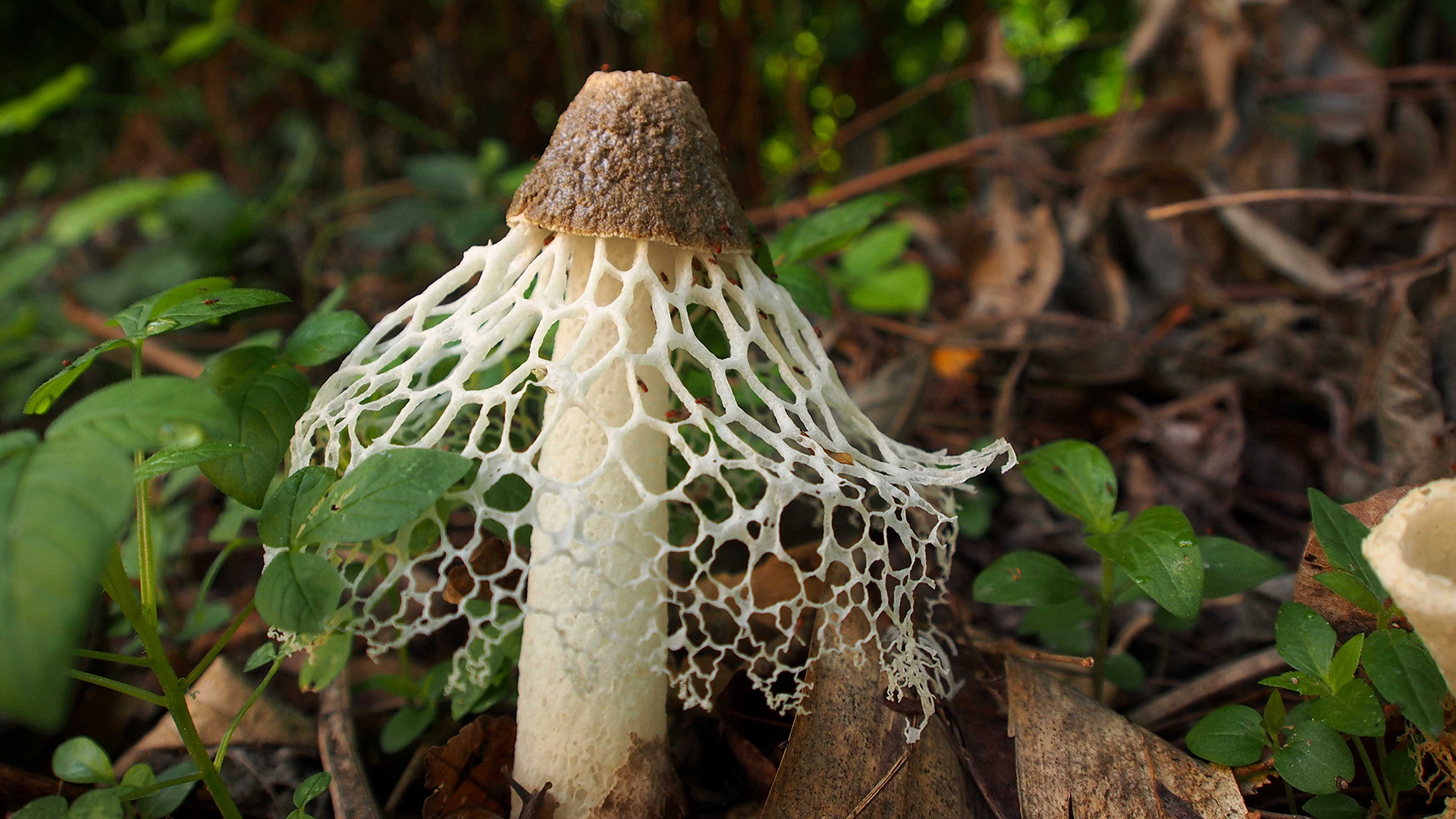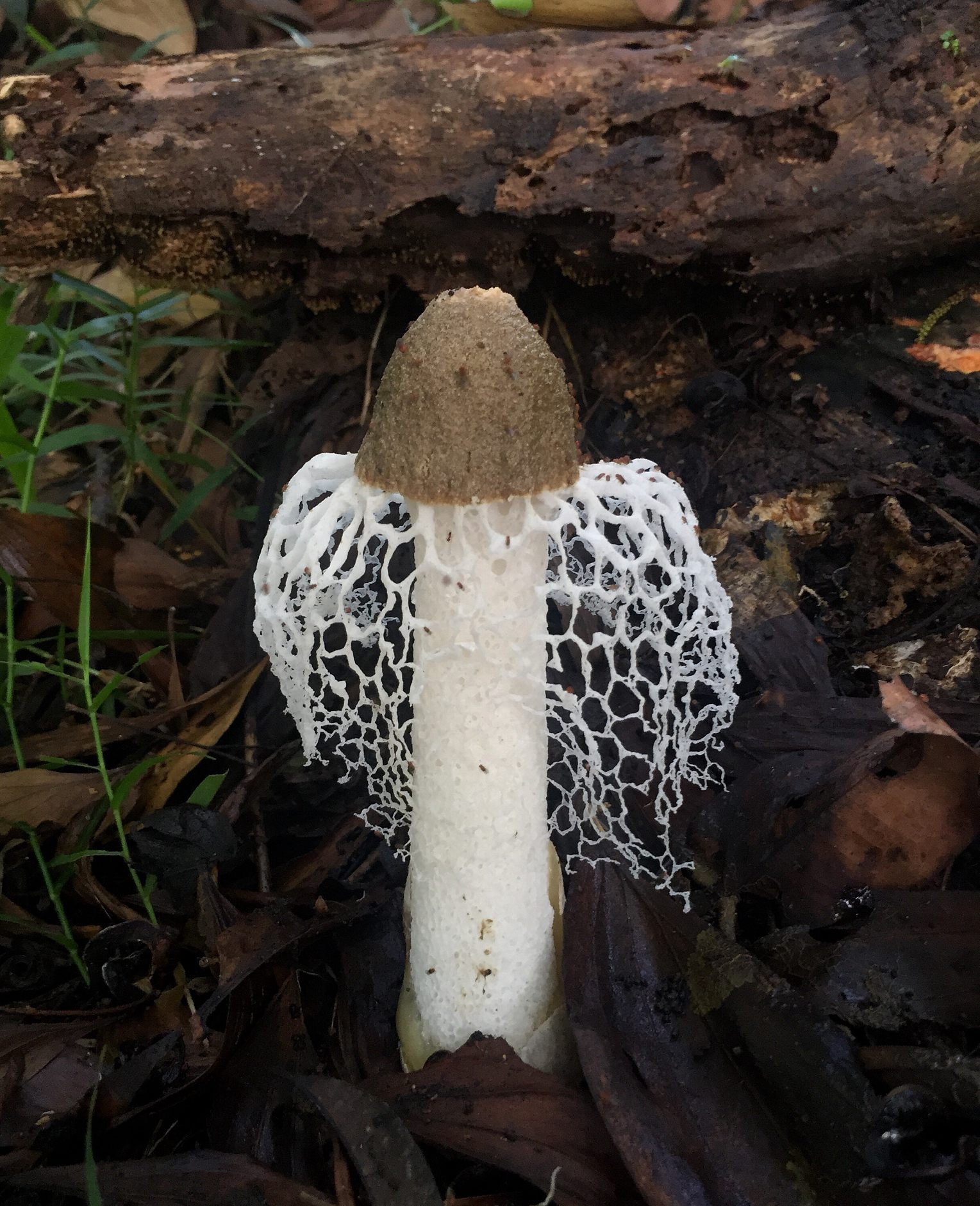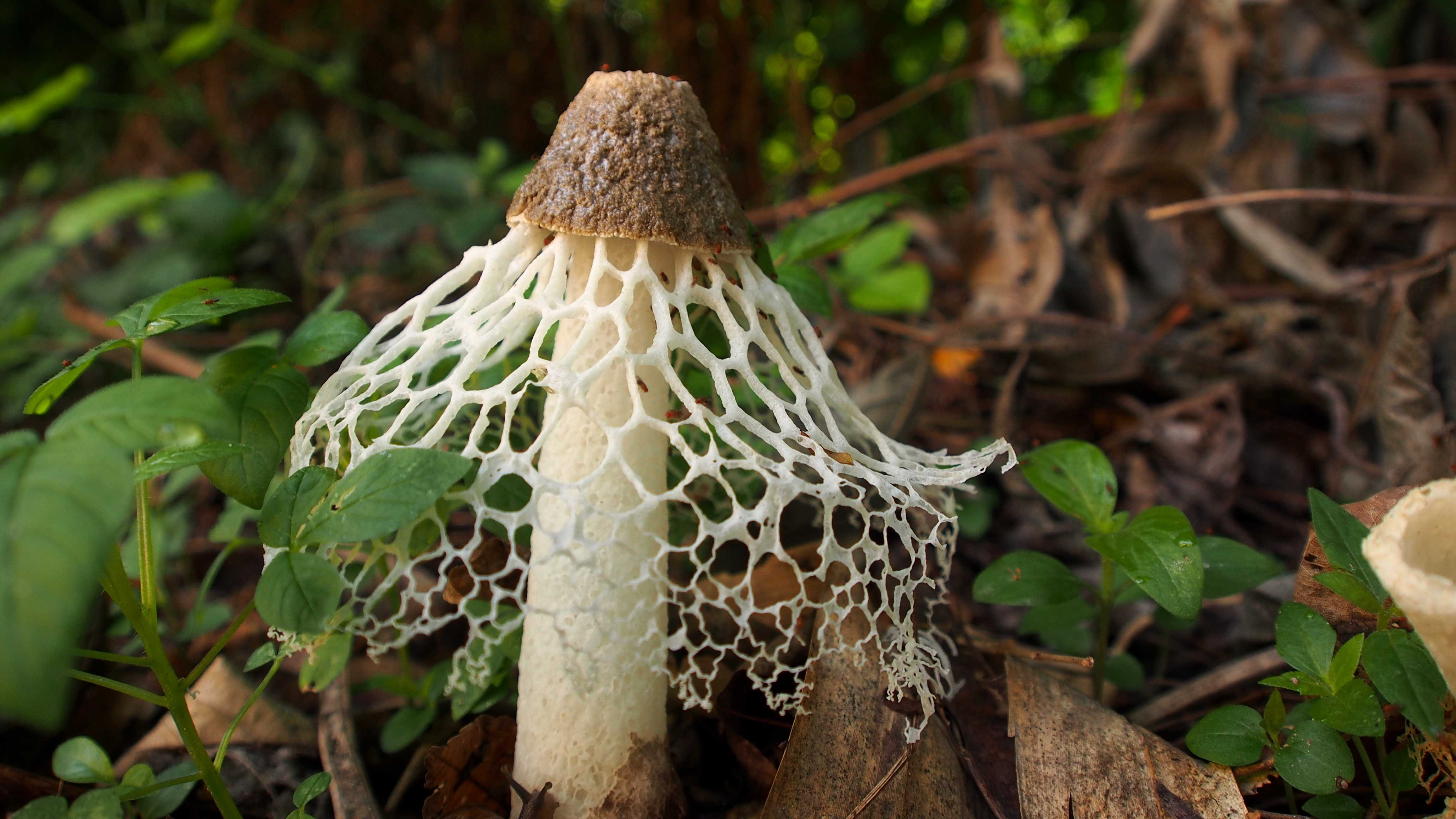00:32

It appears that it's not just humans, plants too like to look pretty. Inhabitant of tropical regions, bridal veil stinkhorn sports a hollowed-out skirt, as if everyday is its big day.
Compared to other bell-shaped mushrooms, bridal veil stinkhorn (phallus indusiatus) is notable for its white lacy skirt, which mostly grows out during the night, and spends around 10 to 15 hours fully unfolding. The length of the skirt ranges from 7 to 25 centimeters, long enough to reach the ground. Akin to bridal-wear, they can only wear the skirt for a couple of days.

The Phallaceae family: bridal veil stinkhorn (L), yellow bridal veil stinkhorn (M), and phallus duplicatus (R). /VCG Photo
The Phallaceae family: bridal veil stinkhorn (L), yellow bridal veil stinkhorn (M), and phallus duplicatus (R). /VCG Photo
Not all mushrooms in the family Phallaceae wear long white skirts. Yellow bridal veil stinkhorn wears a bright yellow skirt, while phallus duplicatus puts on a much shorter version, measuring only 3 to 6 centimeters long.

Bridal veil stinkhorn is an edible mushroom./ VCG Photo
Bridal veil stinkhorn is an edible mushroom./ VCG Photo
In ancient China, people ate bridal veil stinkhorns. However, they were only served on special occasions as they were pretty rare. Nowadays, people can cultivate them in large quantity. They are cooked in chicken soups and hotpot. However, one must remember that yellow bridal veil stinkhorn is poisonous. Some people feel dizzy by simply smelling them.

Bridal veil stinkhorn grows in tropical areas./ VCG Photo
Bridal veil stinkhorn grows in tropical areas./ VCG Photo
In order to spread its spores, the cap of the bridal veil stinkhorn contains a gelatinous gleba that attracts insects. The spores latch onto the insects as they touch the gleba and are carried away to other places, launching a new round of life-cycle.
Alien Fungi
What is the most ancient land-based life after the bacteria? The answer is inconspicuous fungus! As an industrious decomposer in the natural world, fungi have existed for almost a billion years, at least 500 million years older than the first land plants. In the series "Alien Fungi," we will explore some peculiar-looking fungi with alien features and see how they enjoy their eternal, cryptic lives on damp floors, decaying wood and hidden areas.
Read more:
Alien Fungi: The drifting life of bird's nest fungi
Barometer Earthstar: The fallen star praying for moisture
(Cover image via VCG.)
(If you want to contribute and have specific expertise, please contact us at nature@cgtn.com)